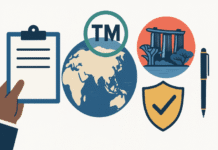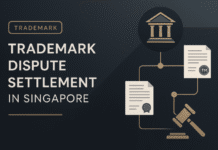Why Should Sea Transport Harbor Craft Industry Digital Plans be Implemented?
Sea transport generally refers to the transport process involving ships, boats, or other vessels over the sea. Additionally, it also involves the carrying across of people or goods. The sea transport industry plays a vital role in the economy of most countries. Sea transport is one of the most common ways of supplying products from one nation to another. There are many advantages of using sea transport like low maintenance cost, ability to carry bulky cargo and lower overheads as compared to rail, land, and air transport. A harbour craft is any vessel that only plies within the waters of a country.
A harbour craft license is needed to use any vehicle as a harbour craft. In recent times, the sea transport harbour craft industry has been facing many challenges owing to factors like increasing costs. Hence, it becomes necessary for the industry to adopt digitalization to be more efficient and optimize the limited resources available. Therefore, this industry needs to adopt the Sea Transport Harbor Craft Industry Digital Plans.
How Crucial are these Plans?
The sea transport industry is a critical component of Singapore’s economy and contributes significantly to the nation’s gross domestic product. A large percentage of Singapore’s workforce is employed in the sea transport industry. The industry has been recently facing heavy competition from ambitious maritime centres like Dubai and Shanghai and also from regional ports.
Singapore realizes that it has to incorporate digitalization for the sea transport industry to thrive and stay ahead of the competition. The nation launched the Sea Transport Industry Transformation Map (ITM) in 2013 for strengthening Singapore’s International Maritime Centre (IMC). The ITM aspires to improve the skills of the maritime workforce and increase productivity.
The Sea Transport Harbor Craft Industry Digital Plans (IDP) is a component of the SMEs (small and medium-sized enterprises). There are Go Digital programs that are designed to make the digitization process easy for SMEs.
The SMEs Go Digital program consists of:
- The Industry Digital Plan which will provide digital solutions and skills required for adapting to the digital process.
- Pre-approved solutions for your business requirements and government grants like Productivity Solutions Grant (PSG). These will provide support for using these solutions.
- Advice from consultancy services to transform your business using digitalization.
- Essential digital solutions for SMEs to start their digitalization journey.
- Avail of the expertise of project managers for employing digital tools.
The digital roadmap for harbour craft is part of the IDP and will guide the SMEs on their digital path. It consists of:
Getting Digital Economy Ready
It consists of the digital solutions and tools that SMEs need adopt to increase their productivity
Management of Vessel Fleet
Use an integrated system for the management of the vessel fleet. The features of this system are:
- Tracking and monitoring the fleet in real-time with all records.
- Assign crews and schedule the deployment of vessels.
- Manage documentation.
- Manage stock levels inside the vessel.
- A platform for communication between the vessel and its main office.
- Connect with other systems such as accounting or order booking
This system will help to use the vessels in the best possible manner through proper planning and deployment. It will also facilitate easier availability of data and records.
Management of Vessel Deployment and Order Booking
Use electronic means for the management of order booking and implementation of crew and vessel. The features of this system will include:
- Getting real-time data of estimated arrival time and vessel location.
- Billing to customers and their sign-off on order completion.
- Connect with other systems such as payroll and accounting.
- Connect with real-time tracking of vessel location.
This system eliminates errors made during manual booking. It enables more straightforward scheduling and deployment of crew and vessels. It also improves the efficiency of the processes involved.
Surveillance and Monitoring of Vessels Using Video
Use video cameras that have night-vision and are tamper-proof, for internal and external surveillance of vessels. This will enable the tracking of vessels off-site and whenever necessary. It will allow better tracking and real-time monitoring of the vessels. It will also reduce the disputes arising during insurance claims following an incident. This will help to minimize theft of fuel or cargo from the ships.
Growing in the Digital Economy
- E-Procurement of supplies by harbour craft operators: Utilize e-platforms to source and obtain supplies, spares, parts, and tools. This will give the benefit of more supply choices and minimize overheads. It will also help to source supplies quickly.
- Vessel Management with advanced features: Advanced vessel management that will help to keep control of factors like speed, distance, fuel usage, engine performance, sound, vibration, and temperature. It will also manage the vessel’s maintenance records. This will help to reduce the operating overheads by timely maintenance and improvement in the performance of the vessel.
Leaping Ahead
- Using drones for Maritime operations: Utilize automated drones that will perform maritime functions like carrying surveillance or delivering packages. This will open up new business opportunities on account of improved capability. It will also enhance the productivity of the workforce by being able to do more valuable tasks.
- Employ AI (Artificial intelligence) for autonomous piloting: Employ AI and machine learning for autonomous piloting. This will prevent accidents and improve safety. It will also result in overall improved productivity.
Providing Digital Skills for Successful Implementation
The Sea Transport Harbor Craft Industry Digital Plans training is available to all harbour industry staff performing job roles like Front-desk operation, harbour pilot, or technician. The following are the courses which will be available for training:
- Tech Basics courses: Light, digital users in the Sea transport Harbour craft industry will get the broad-based training to develop an innovative mentality and create digital awareness. They can also get vendor solution-specific training.
- Tech advanced courses: Advanced digital users will be given the training to develop higher-level digital skills. This training will be aligned with the skills framework for Sea Transport and Information and Communication Technology (ICT).
Support will be extended at each stage of the digitization process and SMEs can either access the information at the IDP official website or scan the QR code for information. They can also buy and implement digital solutions from the MPA website, and if they need funding support, they can apply for the MPA SME grant. For advice on digital solutions, they can approach the business advisor at the nearest SME centre or in the case of advanced digital requirements to approach the Principal consultants at the SME digital tech hub.
If you want to venture out in this industry, you need to know your target market. Fortunately, the sea transport industry is very specific with its niche, so you won’t be having trouble with gaining prime networks. Contact us for more information about improving your brand in this lucrative business endeavour.







